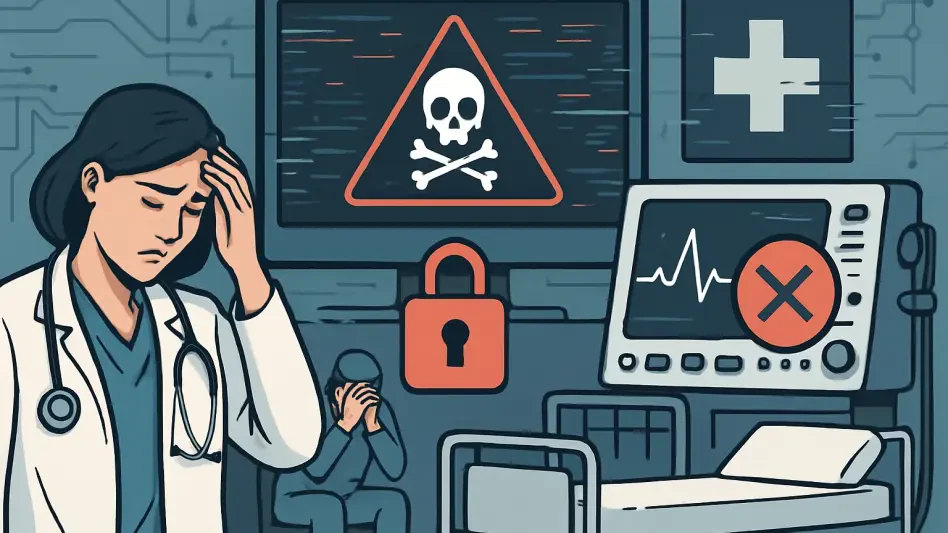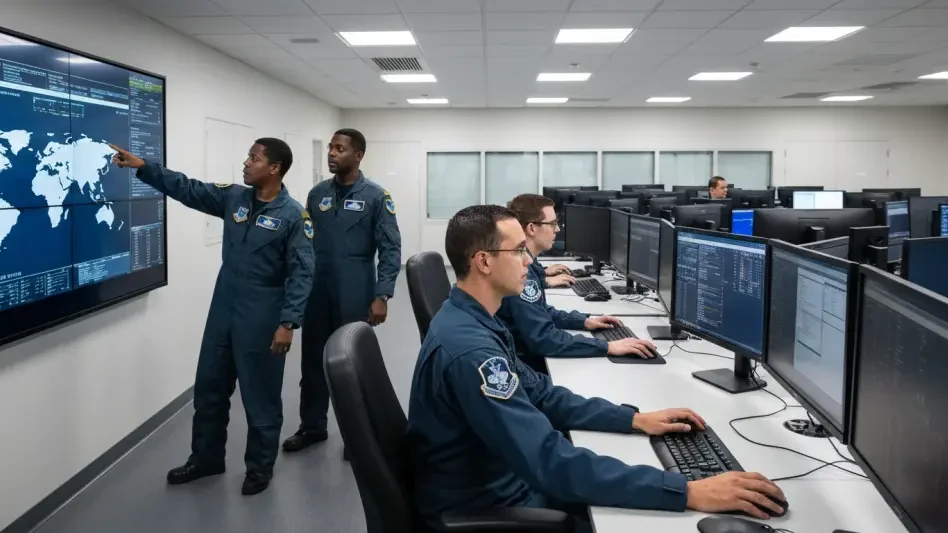In an era where technology underpins nearly every aspect of medical service, the healthcare industry faces a chilling reality: cyberattacks are not just a threat to data but a direct danger to human lives, disrupting the very foundation of patient care. Recent research reveals a staggering 93 percent of healthcare organizations have endured at least one cyber incident in the past year, with many experiencing dozens of attacks. These breaches, ranging from ransomware to sophisticated email scams, are causing significant harm. Beyond the financial toll, which averages millions per major incident, the clinical consequences are alarming, with delayed treatments and increased health risks becoming commonplace. As healthcare systems increasingly rely on digital infrastructure, the intersection of cybersecurity and patient safety has never been more critical, prompting urgent questions about how to safeguard both data and lives in an ever-evolving threat landscape.
The Rising Tide of Cyber Threats in Healthcare
Escalating Attack Frequency and Scope
The frequency and complexity of cyberattacks targeting healthcare organizations have reached unprecedented levels, posing a severe challenge to the sector’s stability. A recent study indicates that the average number of incidents per organization has risen to 43 annually, up from slightly lower figures in prior years. These attacks encompass a broad spectrum, including ransomware that locks critical systems, cloud compromises that exploit digital infrastructure, and supply-chain vulnerabilities that target interconnected networks. Business email compromises further complicate the landscape by tricking staff into divulging sensitive information. The sheer volume of these incidents underscores a troubling reality: no healthcare entity is immune. As attackers grow more sophisticated, the potential for widespread disruption increases, forcing hospitals and clinics to grapple with an unrelenting wave of digital threats that can paralyze operations at any moment.
Direct Impact on Clinical Outcomes
Beyond operational chaos, the most harrowing consequence of these cyberattacks is their direct impact on patient well-being, turning digital breaches into life-threatening events. An alarming 72 percent of affected organizations report disruptions to patient care, a statistic that reflects a grim uptick from previous years. These disruptions manifest in various devastating ways, such as increased complications during medical procedures, extended hospital stays due to system downtime, and critical delays in tests or treatments. In some cases, patients must be transferred to other facilities, adding further strain, while the most tragic outcomes include elevated mortality rates linked to these interruptions. The exposure of sensitive patient data through breaches also heightens risks of identity theft and fraud, compounding the harm. This convergence of clinical and digital crises reveals a stark truth: cybersecurity failures in healthcare are not mere inconveniences but profound threats to human health.
Addressing the Crisis: Strategies and Challenges
Human-Centric Vulnerabilities and Solutions
At the heart of many cybersecurity failures in healthcare lies a persistent and often overlooked factor: human error, which continues to undermine even the most advanced defenses. Research highlights that 35 percent of data loss incidents stem from employees disregarding established policies, while issues like privileged-access abuse and misdirected sensitive information further exacerbate risks. Experts emphasize that negligence and a lack of cyber awareness among staff are significant contributors to breaches, often serving as the entry point for attackers. To counter this, healthcare organizations are increasingly investing in comprehensive employee training programs and enhanced monitoring systems to reduce mistakes. However, the effectiveness of these measures hinges on fostering a culture of vigilance, a task that remains challenging amid busy clinical environments where digital protocols can easily be sidelined in favor of urgent patient needs.
Technological Shifts and Emerging Risks
As healthcare systems embrace digital transformation, the shift to cloud-hosted clinical systems introduces both opportunities and significant vulnerabilities that attackers are quick to exploit. A substantial 75 percent of organizations have either moved or plan to move operations to the cloud, amplifying concerns about account compromises and data breaches in these environments. Additionally, emerging technologies such as insecure mobile applications, flagged by over half of surveyed entities, and generative AI tools, noted by a growing minority, present new frontiers for risk. These innovations, while promising efficiency, often outpace the development of adequate security measures, leaving gaps that cybercriminals target with precision. Addressing these threats requires not only increased investment—currently averaging 21 percent of IT budgets for security—but also a strategic focus on integrating robust defenses into every layer of technological adoption.
Leadership Gaps and the Path Forward
Reflecting on the multifaceted crisis, it has become evident that a lack of internal expertise and clear leadership has hindered many healthcare organizations from mounting an effective defense against cyber threats. Despite budgets for IT security reaching an average of $65 million annually, the absence of skilled personnel and cohesive strategies often leaves systems exposed. Financial settlements, such as multimillion-dollar payouts to affected patients, have underscored the high stakes of failure, while operational losses from downtime further strain resources. Looking ahead, the path to resilience lies in cultivating strong cybersecurity leadership and prioritizing human-centric solutions alongside technological safeguards. Bridging the expertise gap through targeted hiring and partnerships, combined with sustained training initiatives, offers a viable way to protect patient care. As the industry moves forward, a unified commitment to integrating security into every facet of healthcare delivery will be essential to mitigate risks and ensure safety.








